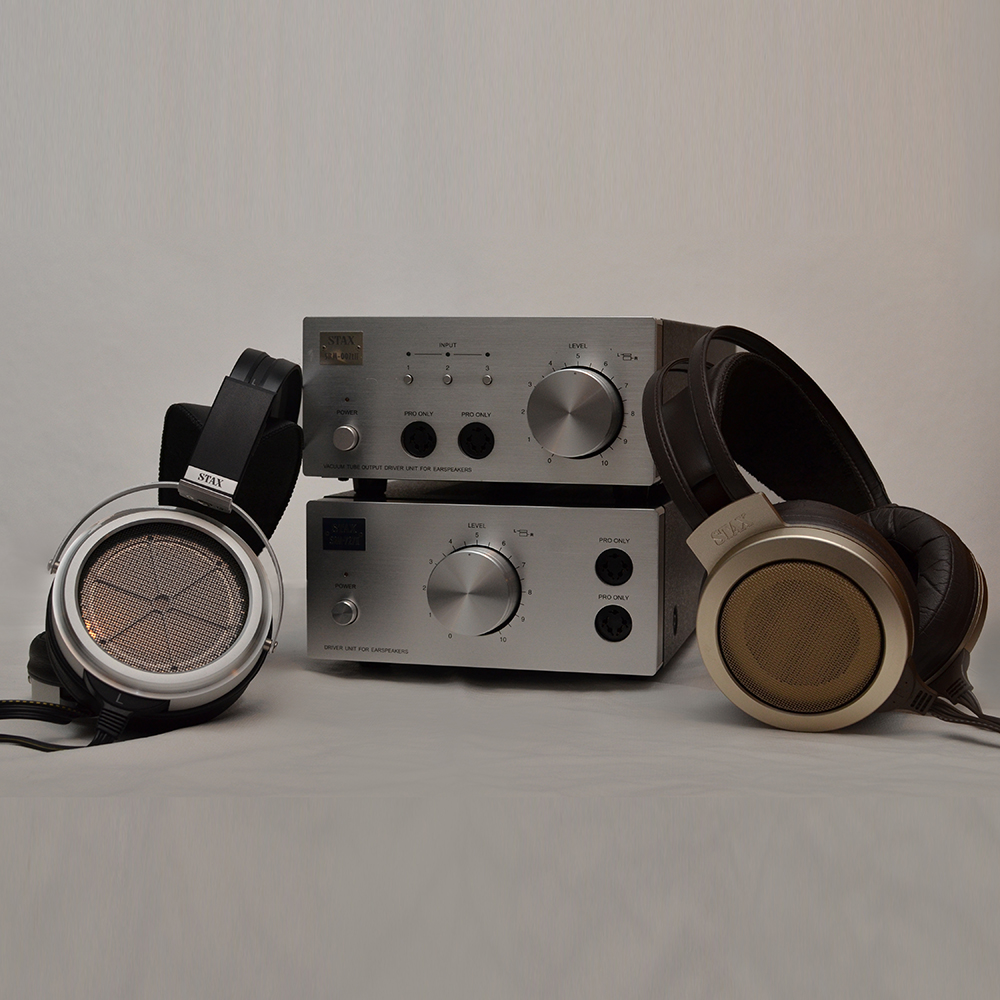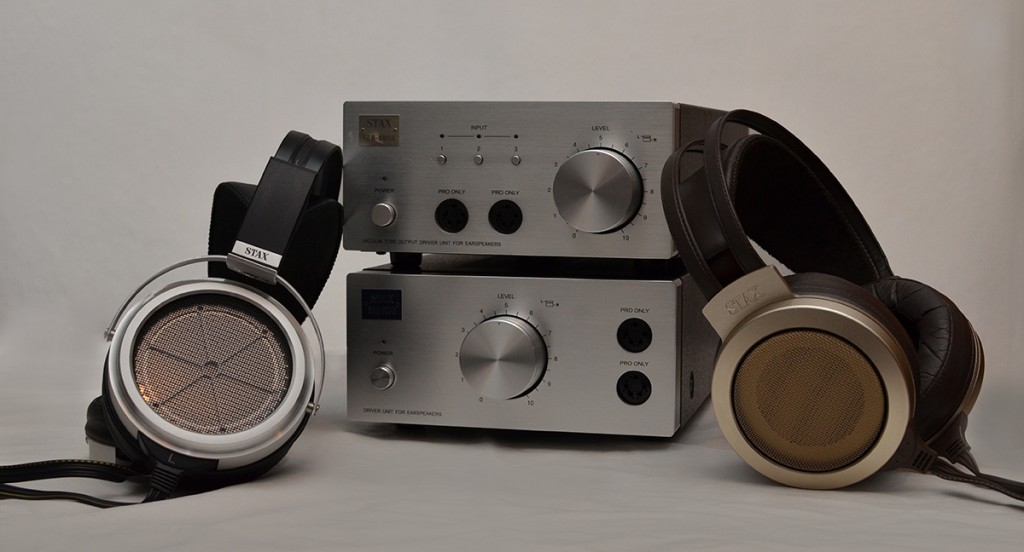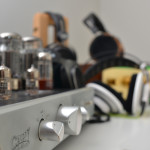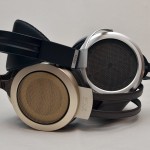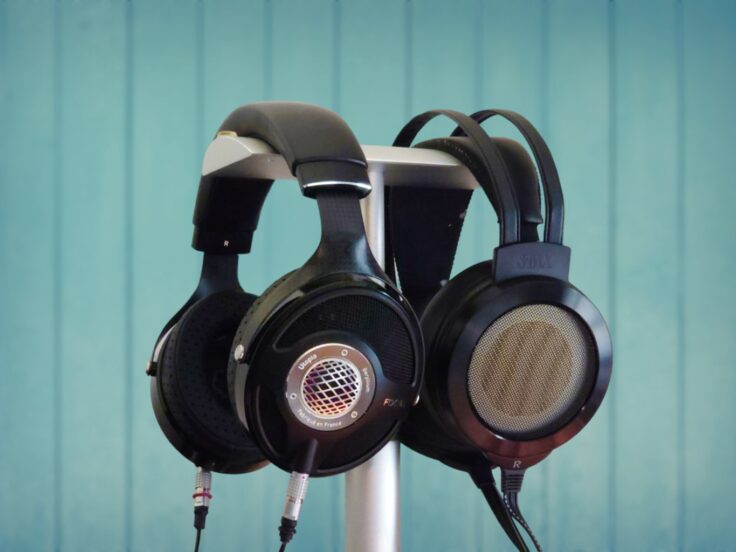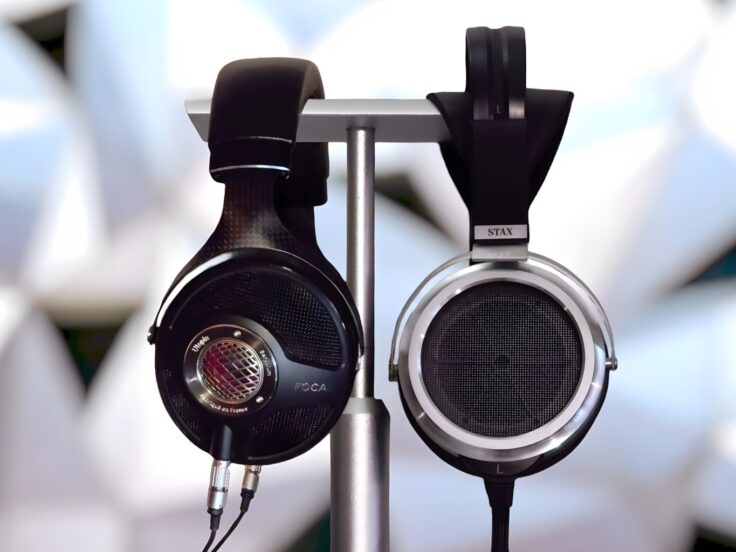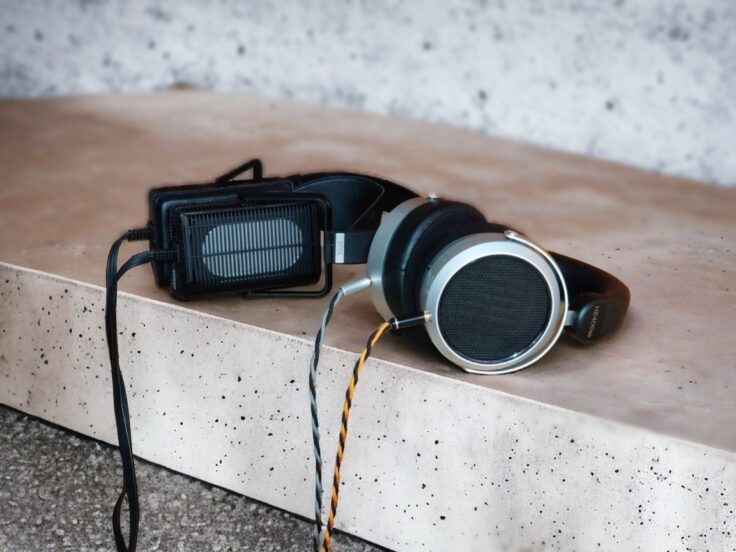Which Top Driver to Max Your Stax?
Stax is a Japanese maker of electrostatic headphones and amplifiers. Stax prefers to call their amplifiers “drivers” and their headphones “earspeakers” – just to make clear that it is something special. And the electrostatic sound is something special – not only in technical terms. .
Stax offer four driveres for their full size headphones: The solid state SRM-323S and SRM-727II, and the tube hybrids SRM-006tII and SRM-007tII. For the record, you cannot use Stax headphones with normal headphone amplifiers, so most Stax users choose between these four. In this review, we are going to compare the sound of the two least affordable options.
The SRM-007tII is Stax’s top of the line tube-hybrid amplifier, sporting four 6FQ7/6CG7 tubes, which is the double of its little brother, the SRM-006tS. They are basically the same design, but the 007tII is a little more powerful and have a little better specs. The SRM-007tII in this test have gotten the standard Electro Harmonix tubes replaced by some NOS RCA “cleartops”. Changing tubes can affect the audio quality.
The Stax SRM-727II is Stax’ top transistor amplifier, based on FET-transistors. It is rated with a maximum output voltage 450 Vrms, which is a bit higher than the 340 Vrms of the 007tII. However, continuous output power ability tells you just so much, especially with tube designs. In the end, specs are not what matters, it is the ability to let the listener enjoy the music.
About the review
For this review, I teamed up with a fellow headphoneer to get a second opinion. This is not a full review, so we will not be going into long descriptions of each products. This is a comparison made by two enthusiasts, amplifiers playing side by side. We listened to each amplifier in turn, going back an forth until we we certain we had identified significant differences. Then we discussed what we heard, and to our surprise, we seldom disagreed. We were both already familiar with both the headphones and amplifiers used in the review, so there is no “first listen”-effects.
For the test, we used the the present Stax flagship headphone SR-009, and the (legendary) former flagship Stax SR-007mkI (also referred to as “O2”). We also have made a comparison between the two headphones, which you can read in a separate post.
Stax SRM-007tII vs SRM-727II on SR-009
We started out with what many claim to be the most fabulous headphone ever made, and certainly among the most expensive in current production. But which of the Stax drivers will make the SR-009 shine the most? Here is our track by track comparison, and our shared impressions:
Higdon’s “Violin Concerto – 1726” performed by Hilary Hahn
On this violin concerto the 007tII presentation was more resolved, there were more air around the instruments. We also found the soundstage to be wider and deeper, while at the same time we felt closer to the musicians, feeling the 007tII were more up front than the 727II. If anything, we might notice a tiny bit more punch in the bass on the 727II.
Morissey – “Irish Blood, English Heart”
We did get the feel that the bass was a tad fuller on the on the 727II. However, the music felt less “noisy” on 007tII, just cleaner, less perceived distortion. Separation and definition on 007tII was better.We found the mids, especially vocals, to be more natural sounding on the 007tII. The treble felt pretty close here.
Olga Konkova – “As Before”
Again, 007tII had better mids. Generally it conveys a more natural sound and the especially portrays the piano very good. Cymbal resonance feels more organic. The sound is more open, there is more air around each instrument. Simply put, the 007tII sounds clearer and more organic, while the 727II has more of a glassy and dry sound to it, especially on the piano. It has a more compressed soundstage. Even though it has a good low end punch, it’s not necessarily better downstairs either.
Lamb – “Scratch Bass”
On this track we do not get the impression that the 727II’s bass is fuller. Nor does it sound any tighter. Over all, the 727II is slightly edgy in comparison. Again, the 007tII simply is clearer and more organic sounding.
Thomas Dybdahl – “This Love is Here to Stay”
Here, the 007tII gives the guitar a more natural feel, and paints a wider, deeper soundstage. however, on this tracks the differences are very small, and some of the percussive elements stand out better on the 727. Generally the 727II feels slightly “flatter” sounding – soundstage not as deep, with less air around instruments.
Stax SRM-007tII vs SRM-727II on SR-007mkII
The SR-007mkI is known for being a demanding headphone, so we were a bit preconcieved here, expecting the more powerful 727II (at least on paper) will have a comparative advantage on the SR-007 relative to the more easily driven SR-009. However, we have our ears open.
Higdon’s “Violin Concerto – 1726” performed by Hilary Hahn
The violin conderto is delicately played on the 007tII with liguid highs, warmer mids, and better sense of separation as well as soundstage depth. On the 727II the music feels more distant. It basically gives a flatter listening experience. Not doing it wrong – it still is gorgeous, but with less charm and emotion than the 007tII tube hybrid.
Morissey – “Irish Blood, English Heart”
The 727II is crisper and feels a bit drier. Maybe it gives us more deep bass on the bass guitar, but we are really in doubt about that. On the 007tII we feel the vocals are more natural, and find this amplifier to have bit richer overtones. All in all, the the two amps are really quite similar on this track, but we find the 007tII slightly better, although the 727II has an appealing edge to it, which suits rock more than acoustic music.
Olga Konkova – “As Before”
Definitely more of an organic feel to the piano on the 007tII. It has more of that liquidity in the mids and treble. You get a better “sense of the room”, we agreed. This is about getting the feeling that you are there, that you aren’t listing to a recording. Shimmer and overtones feels more organic and natural. With the 727II vocals are drier, the music is slightly flatter sounding, maybe we can call it slightly muted sounding in comparison. However, the sense of texture is quite good, which might be due to the drier sound.
Thomas Dybdahl – “This Love is Here to Stay”
With the 727II vocals are fatter, but not as clear. Again, the 007tII is the more organic and natural sounding, especially on the guitars and vocals. Differences are small, but the added hint of natural and organic gives the 007tII the edge.
Lamb – “Scratch Bass”
Soundstage feels deeper on the 007tII, treble is more liquid, while the 727II gives a drier presentation in the higher registries. Upper bass and lower mids are slightly fatter. But still, the presentation is quite similar.
Conclusions
The two of us mostly agreed on the differences between the amplifiers and how to describe them, and the preferred amplifier was in most cases the 007tII. But the difference were actually surprisingly small. These two Stax amps share a very similar sound signature. Basically, they have the same “Stax house sound”. We would hesitate to call the on brighter or bassier than the other. Even the mids are quite equally tuned, even though the 007tII consistantly played them a bit more up front and in a more organic way.
We both agreed that the difference was more prominent with the SR-009 and less obvious with SR-007. The advantages of the 007tII was indeed more prominent on acoustic music. Vocals, piano, guitar and cymbals sounded especially natural and organic and we still felt we got a better sense of detail and overtones. 727II felt drier, texture was more obvious but less nuanced. This relates to what really made the 007tII stand out: The extra sense of liquidity in the mids and highs are just delicious.
On electronic and pop music and the differences were less apparent, and sometimes we found the 727II equally or even slightly more enjoyable on some passages. 727II is a bit drier and harder in its tone, which might give some extra edge to some recordings, like the Morrisey track. In terms of soundstage, SRM-007tII gave better sense of space, better sense of depth with more air around instruments. A phrase often used by us, was you could hear the room better with the 007tII, being there with the musicians, while 727II had a flatter sounding stage.
When reading trough our notes, however, we cannot avoid getting the feeling that differences look bigger on paper than they actually sound. Both the amps sound great, but we think the 007tII really is the better. At the same time: If you are scared of tubes, you aren’t really loosing out too much.
Concluding Conlusion
So basically, we can sum it all up in a few words:
007tII: More liquid treble and mids, more natural and organic, better and deeper soundstage, more air around instruments.
727II: Almost up there, but slightly drier, harder and flatter sounding. Sometimes we felt it gave just a tad more bass.
Related equipment
We used a Squeezebox Touch playing lossless flac and fed it to a NAD M51 DAC. Then we used a Belden 1508A XLR cable to the SR-007tII and a Transparent Super mm2 to the SR-727II for most of the listening, but to make sure we weren’t listening to differences in cables and the XLR/RCA inputs, we tried out different configurations. The difference between the amplifiers were significantly more pronounced than the difference between the cables and the XLR/RCA inputs. The 007tII was equipped with NOS RCA cleartop tubes in place of the stock tubes.


